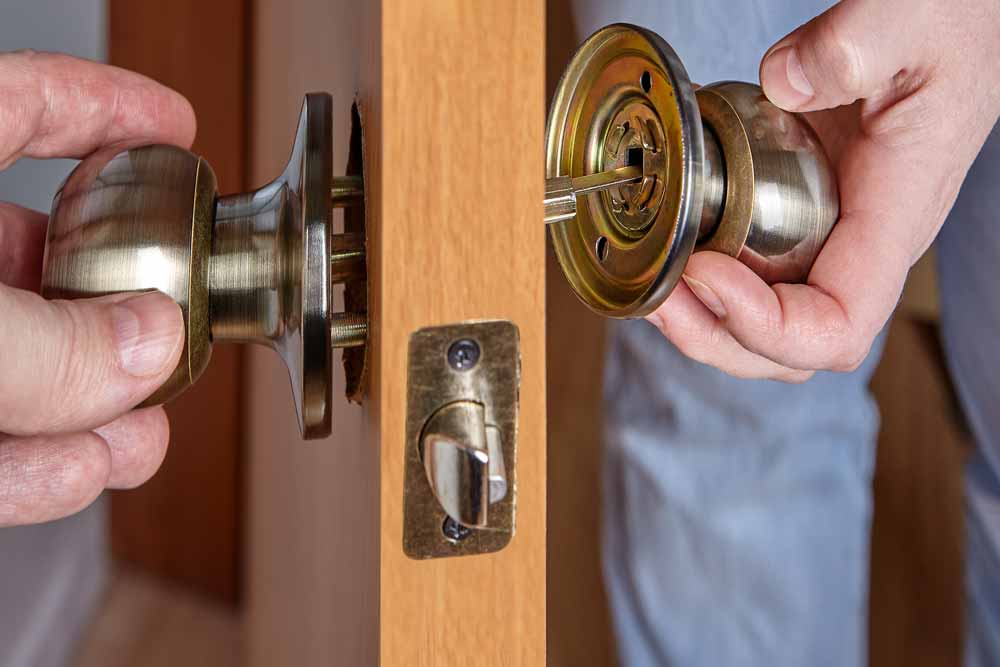How To Use A Door Handle?
How to use a door handle? It looks like a simple question. Most people think that using a door handle is just a simple task in that you turn a knob or a door handle, and the door will be opened or closed. But sometimes, the simplest things have the most complex mechanisms.
You will be very surprised to learn about this mechanism, which just looks like a simple task to use a door handle. But there is a detailed series of events behind it. To learn about the mechanism, you should have detailed information about the parts of the door handle that participate in the usage of door handles.
In this article, you will learn about the different parts of the door handle and their working mechanism.
Parts Of Door Handles
First of all, you should know the parts of the door handles that play an important role in the working mechanism. Here, I will provide you with a complete guide over the parts of door handles:
Lever Or Knob
You all know that there are two types of door handles:
Lever Handles: These handles are pushed downward to open the door. Pushing down the lever removes the latch from the door frame, and the door will be opened. The lever is connected to the backplate.
Door Knobs: These are circular-shaped heads. You rotate them, and the door opens.
The Backplate Or Rose
The backplate or rose is the outer part of a door handle where the handle is attached. It can be circular-shaped (rose), vertically elliptical, or rectangular (backplate). This part can be unscrewed to take the handle apart.
A back-plated door handle and a covered rose do not have visible screws. However, a standard rose door handle usually has two to three screws holding it to the door.
Inside Parts Of The Door Handles
- Spindle
- Tubular Latch
- Strike Plate

Spindle
A spindle, typically constructed from steel, acts as a connecting rod between two handles or two door knobs positioned on opposite sides of a door. Spindles are offered in two sizes: 8mm: The 8mm spindles are designed for use with door handles and doorknobs
5mm: The 5mm spindles are fitted with bathroom thumb turns and release locks.
Working Mechanism: The spindle goes through a square opening in the handle's backplate or rosette. It goes through an opening in a tubular latch or mortice lock fitted in the door. When the handle is used, or the door knob is turned, the spindle turns to operate the latch in the door. This action removes the latch bolt and allows the door to be opened.
Tubular Latch
The tubular latch is a steel tube with a loaded spring latch bolt. When you turn the handle, the latch bolt reverses to open the door and springs back to keep it closed. A tubular latch installs a door handle on doors that do not need to be locked, like those in your living room, dining room, or kitchen.
Sizes Of Tubular Latches:
- We have 64mm and 76mm tubular latches in different finishes that fit well with handles.
- If you're using lever door handles, I suggest you use a 64mm tubular latch. For doorknobs, I recommend a 76mm tubular latch for more space to move the knob.
Strike Plate
A metal plate attached to the doorjamb is called a strike plate. The latch bolt goes into the central hole of the strike plate and keeps the door closed. The strike plate keeps the latch bolt in place until the door opens again.
Strike plates protect the doorjamb from friction due to the latch bolt and increase its security because they are often made of a softer material, such as wood. This plate guides the latch into the door jamb hole, which keeps the door closed until you rotate the lever.
Sprung and Unsprung
Most modern handles have a spring inside, making the door handle return to its original position once released. This is important as it keeps the lever or handle in place rather than sagging.
Some knobs and older handles are not sprung. They use the door locking mechanism to return to position, so they need a heavy-duty sprung latch or lock to work effectively.
On the other hand, some mortice knobs are sprung on one side only. If both sides were sprung, the knob would be very difficult to turn. If it had no spring at all, the latch spring alone might not be strong enough to pull the knob rotation back again.
Working Mechanism Of Door Handle
When you turn a door knob, the handle and spindle rotate, pulling the latch bolt out of the door frame. When you release the handle, the spring pushes it to its original position. The spring then pushes the latch back, releases it in the door frame, and connects with the strike plate.
Working Mechanism of Door Locks
The working mechanism of door locks is completely different from levers and knobs, and it works according to their type. There are three main types of door locks:
Keyhole Locks
The traditional keyhole lock has a keyhole cut into the front. You must install mortice locks inside the door for this type of lock. A mortice lock pairs the latch and bolt, which helps work the door. The lock fits into a slot on the side of the door and connects the strike plate in the door jamb hole.
Euro Lock
Euro locks can provide a higher level of security for your doors. They are cylindrical and need to be paired with a Euro Profile Lock. With a euro lock, the door handle will have a more significant keyhole-shaped cut into the front to accommodate the euro cylinder.
Bathroom Lock
A bathroom lock has a latch operated by a handle and a bolt operated by a thumb turn instead of a key.
Conclusion
From the above discussion, it is clear that using a door handle looks like a simple task but involves a series of parts and functions. Now you have complete knowledge about this using a door handle mechanism.

